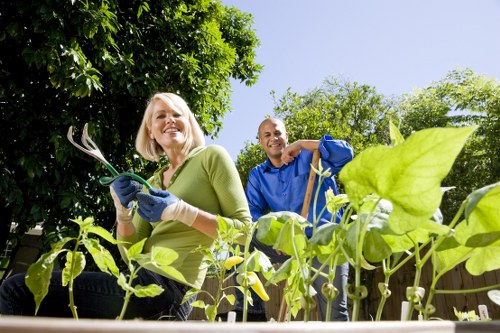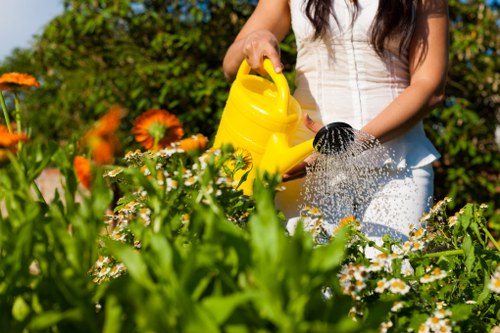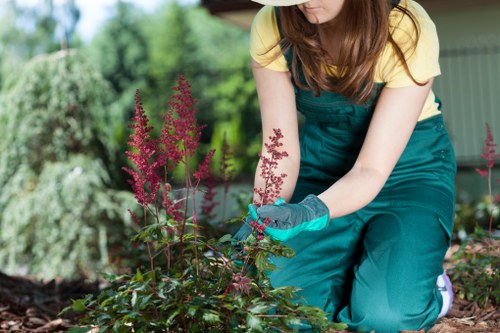Driveway Algae Removal in South Woodford: Keep Your Drive Clean and Safe

Algae growth on driveways is a common issue in South Woodford, especially during damp and shaded months. Not only does algae make your driveway look unsightly, but it can also create slippery conditions, posing safety hazards for you and your visitors.
Understanding the causes and effective removal methods is essential to maintaining a clean and safe driveway. This article explores the best practices for driveway algae removal in South Woodford, ensuring your property remains attractive and safe throughout the year.
Whether you're dealing with minor discoloration or extensive growth, addressing algae promptly can prevent long-term damage to your driveway surface. Let's delve into the factors that contribute to algae growth and how you can effectively manage and eliminate it.
Causes of Algae Growth on Driveways

Algae thrive in environments that provide moisture, shade, and nutrients. Understanding these conditions is the first step in preventing and removing algae from your driveway.
Moisture: Consistently damp surfaces are ideal for algae to flourish. Driveways in areas with high rainfall or poor drainage are more susceptible.
Shade: Trees, shrubs, and nearby buildings can create shaded areas that reduce sunlight exposure, promoting algae growth.

Environmental Factors
The climate in South Woodford, characterized by frequent rain and humidity, creates perfect conditions for algae to grow. Additionally, proximity to gardens and green spaces can contribute to the accumulation of organic matter, providing nutrients for algae.
Human Factors
Driveway materials and cleaning habits also play a role. Porous materials like concrete can retain moisture, while irregular cleaning routines allow algae to establish and spread.

Effective Methods for Algae Removal

Removing algae effectively requires choosing the right method based on the severity of the growth and the driveway material. Here are some proven techniques to restore your driveway's appearance.
Chemical Treatments: Algaecides and other chemical cleaners can effectively kill and remove algae. It's important to choose environmentally friendly options to minimize harm to surrounding vegetation.
Pressure Washing: Using a pressure washer can physically remove algae from the driveway surface. This method is quick and effective but should be used carefully to avoid damaging the driveway material.

Chemical Treatments
Chemical solutions like bleach-based cleaners or specialized algaecides can be applied to the affected areas. Always follow the manufacturer's instructions to ensure safe and effective use.
Eco-friendly Solutions
For those concerned about environmental impact, eco-friendly options such as vinegar mixtures or baking soda solutions can be effective alternatives to harsh chemicals.

Preventative Measures

Preventing algae growth is often more manageable than removing it. Implementing preventive measures can keep your driveway clean and reduce maintenance efforts.
- Regular Cleaning: Sweep and hose down your driveway regularly to remove debris and prevent algae from gaining a foothold.
- Improved Drainage: Ensure that water drains away from your driveway to reduce moisture levels that promote algae growth.
- Sunlight Exposure: Trim nearby vegetation to increase sunlight exposure, making the environment less conducive to algae.

Regular Cleaning
Maintaining a cleaning schedule helps in keeping algae at bay. Regularly removing dirt and organic matter prevents the nutrients needed for algae to grow.
Sealing the Driveway
Applying a sealant to your driveway can create a barrier that resists moisture and reduces the chances of algae establishing itself.

Choosing a Professional Algae Removal Service in South Woodford

While DIY methods can be effective for minor algae issues, hiring a professional service ensures thorough removal and long-term prevention. Professionals have access to specialized equipment and expertise to handle stubborn algae growth.
When selecting a service, consider factors like experience, customer reviews, and the methods they use to ensure they align with your environmental and safety preferences.
Investing in professional algae removal can save time and effort, providing peace of mind that your driveway will remain clean and safe.
What to Look For
Choose a service with proven experience in algae removal, positive customer feedback, and a commitment to using safe and effective methods.
Cost Considerations
Prices can vary based on the size of your driveway and the extent of the algae growth. It's advisable to get quotes from multiple providers to find a service that fits your budget.
Local Expertise
Local professionals understand the specific environmental conditions in South Woodford, allowing them to tailor their services for optimal results.

Nearby Areas Serving South Woodford
In addition to South Woodford, several nearby areas can benefit from driveway algae removal services. Each area has its unique characteristics that influence algae growth and removal strategies:
- Stonebridge: Located just north, Stonebridge experiences similar weather patterns, making algae prevention crucial.
- Wanstead: With its lush greenery, Wanstead requires regular driveway maintenance to combat algae growth.
- Crooked Billet: Known for its heavy rainfall, this area benefits from effective drainage solutions alongside algae removal.
- Redbridge: A neighboring area with diverse residential properties, Redbridge residents often seek eco-friendly algae removal options.
- Chingford: The expansive gardens in Chingford provide ample nutrients for algae, necessitating regular cleaning.
- Brook Green: Proximity to water bodies in Brook Green increases moisture levels, promoting algae growth on driveways.
- Rotherhithe: This area’s urban environment means limited sunlight, making algae removal services highly sought after.
- Leyton: With a mix of old and new driveways, Leyton faces varying challenges in algae prevention.
- Gants Hill: The shaded driveways in Gants Hill require specialized algae removal techniques.
- South Tottenham: Rapidly developing, South Tottenham needs efficient algae removal to maintain property aesthetics.
- Highams Park: The combination of high humidity and shade in Highams Park makes algae management essential.
- Fairlop: Frequent overcast days in Fairlop contribute to persistent algae challenges for homeowners.
- Ilford: Diverse driveway materials in Ilford require tailored algae removal approaches.
- Wanstead Flats: The open spaces near Wanstead Flats can lead to increased organic debris on driveways, fostering algae growth.
- Forest Gate: Similar to South Woodford, Forest Gate’s climate supports thriving algae populations without proper maintenance.
Frequently Asked Questions
- What causes algae to grow on driveways?
Algae thrive in moist, shaded environments with abundant organic matter. Factors like poor drainage, limited sunlight, and the presence of nutrients from surrounding vegetation can promote algae growth.
- Are there eco-friendly methods for removing algae?
Yes, solutions like vinegar and baking soda mixtures, as well as using eco-friendly algaecides, can effectively remove algae without harming the environment.
- How often should I clean my driveway to prevent algae?
Regular cleaning, at least once every few months, can help prevent algae from establishing. Additionally, addressing moisture and shade issues can reduce the likelihood of growth.
- Can algae damage my driveway surface?
While algae themselves may not cause direct damage, the moisture they retain can lead to deterioration of driveway materials over time, especially in porous surfaces like concrete.
- When is the best time to remove algae from my driveway?
The best time to remove algae is during dry periods when conditions are favorable for cleaning and treatment. However, prompt removal is essential regardless of the season to prevent spreading.
Frequently Asked Questions
What Our Customers Say





 (10)
(10)
Get In Touch With Us.
Please fill out the form and we will get back to you as soon as possible.
